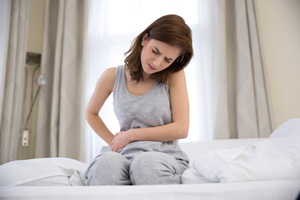
Pelvic Pain
Pelvic pain is pain that occurs in the lower abdomen and pelvis. The pelvic region is the area between the umbilicus (belly button) and the groin in the front and between the buttocks at the back. Pelvic area mainly consists of reproductive, urinary and digestive systems such as uterus, bladder, and intestines.
Pelvic pain can be acute or chronic. Acute pelvic pain occurs suddenly and stays only for a short period of time. Chronic pelvic pain lasts for more than six months and does not show any improvement with treatment.
Symptoms
Pelvic pain may be dull or sharp; persistent or intermittent; mild to severe, and can extend to your lower back or thighs.
The common symptoms with pelvic pain are:
- Pain in the hip and groin area
- Pain and cramps during menstruation
- Pain during urination, bowel movements, and intercourse
- Fever or chills
- Constipation or diarrhea
Causes
Usually, pelvic pain is considered as an indication for infection or problem in the pelvic area. It is observed most commonly in women but can also occur in men.
The common causes of acute pelvic pain are:
- Pelvic inflammatory disease (infection of the reproductive organs)
- Urinary tract infection
- Appendicitis (inflammation of the appendix)
- Ectopic pregnancy (pregnancy that occurs outside the uterus)
- Twisted or ruptured ovarian cyst
- Ruptured fallopian tube
- Miscarriage or threatened miscarriage
- Congestion or abscess (collection of pus) in the pelvic region
The common causes of chronic pelvic pain are:
- Chronic pelvic inflammatory disease
- Endometriosis (abnormal growth of uterus lining)
- Interstitial cystitis (inflammation of the urinary bladder)
- Irritable bowel syndrome
